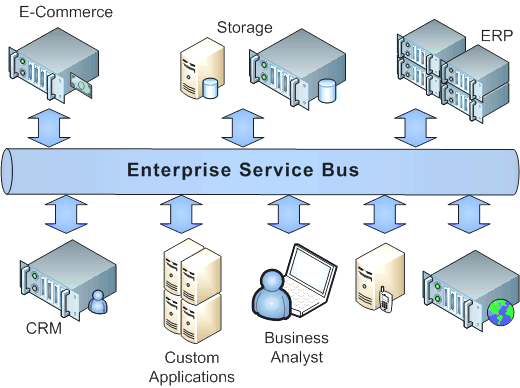Technology takes over all sectors of life, including business. Even though you were used to managing your own business the way you know it, you should start adapting to the latest trends in terms of enterprise data integration. Handling data is the biggest issue for business owners because it can be a waste of time and energy. Focusing that respective time and other resources on what really matters could propel the business to the top, by increasing its profitability and production levels to the max. It might be complicated to understand the complex processes behind data integration, but once you do it you will benefit from the results of its application. In this article, you will learn more about integration architecture with an emphasis on ESB and hub-spoke architecture.
Integration architecture
Software architecture represents the integration of different IT components in running the processes and tasks present in a business. Integration architecture refers to making use of cross-platform utilities and other digital operations in order to handle data better. Basically, integration has to do with interconnection, so that different software programs that your company uses can communicate one with another. Integration architecture is the basic skeleton of an IT system. There are several types of integration architecture, but this article is going to focus on two of the most selected types: ESB and Hub-Spoke. Each type of integration architecture has its own specifications and uses that you will learn about by simply reading further.

Enterprise Service Bus (ESB)
Enterprise Service Bus is a type of software architecture, a tool that is used to separate tasks between the components of an application that communicate with each other. ESB is different from microservices, which represent a different workflow strategy, based on decoupled approaches. ESB unifies the way that information is sent and received by the application components and is not limited from any point of view, compared to traditional service-oriented architecture. The duties of an ESB system include routing informational messages between components, to monitor and control this information exchange, to marshal the use of redundant processes and finally to provide commodity to the business owner.The middle ware tools included in ESB architecture can help any business to manage workflows efficiently.

Hub-Spoke
Hub-spoke is different from point-to-point integration. They are actually opposite – point-to-point means that the systems are communicating to one another directly. The cost of maintaining a point-to-point integration architecture is rising when adding new systems to your business. For businesses that grow visibly in time and require more and more systems that have to communicate, it is recommended to use a hub and spoke software architecture. It scales much better compared to point-to-point integration and costs do not dramatically change while the systems are increasing in number. The benefits of hub-spoke architecture include the drastic reduction of the liability of scale, the increase of business agility, it enables insight and maximizes the Return on Investment.
